Feeling Wanderlust? Check Out Kapoor Galleries’ Transporting Show of Vintage Travel Posters Here
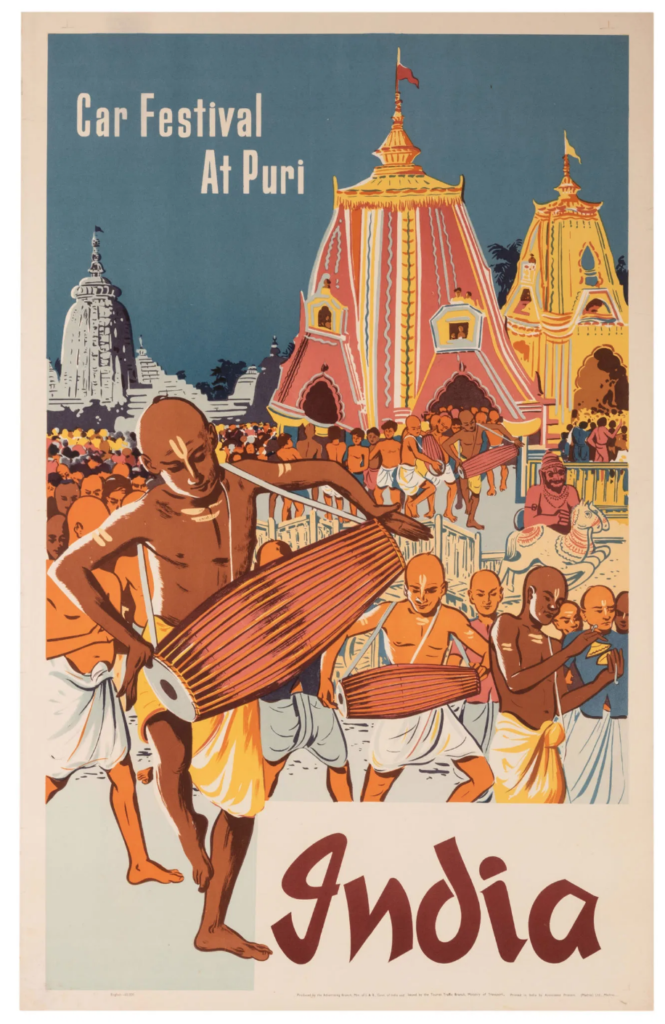

Katie White

Though the farthest any of us may be traveling in the next few weeks is from one end of the apartment to the other, our cooped-up imaginations are likely craving some more exciting adventures. In the early 20th century, travel posters offered many people just that kind of escape, providing glimpses of beauty and wonder in distant and sometimes exotic destinations well before the internet.
Aviation companies, travel agencies, and even national governments marketed these visions to wealthy would-be travelers—though the images captured the imaginations of a much wider public. New York’s Kapoor Galleries’ current online exhibition “Images of the Exotic: Posters from India from the Golden Age of Travel” offers a wide range of these dazzling posters promoting travel to India from the 1930s to the ’70s. They showed people in what would have been unfamiliar, brilliantly colored attire and jewels, majestic architecture, and sweeping natural vistas.
Following the nation’s independence in 1947, the government produced many of its own posters to boost tourism as it worked to build a new economy. It sought to showcase the nation’s diverse sites, from the mountaintops of Kashmir and snowy climes of northern regions like Kanchenjunga, to kaleidoscopic city festivals and architectural landmarks like the Taj Mahal. Though many of these posters were made by unidentified graphic artists, many can be attributed to American artist David Klein, Danish artist Otto Nielsen, and Swiss artist Donald Brun, who each brought their own identifiable styles to their posters.
See images from “Images of the Exotic: Posters from India from the Golden Age of Travel,” viewable online at Kapoor Galleries below.
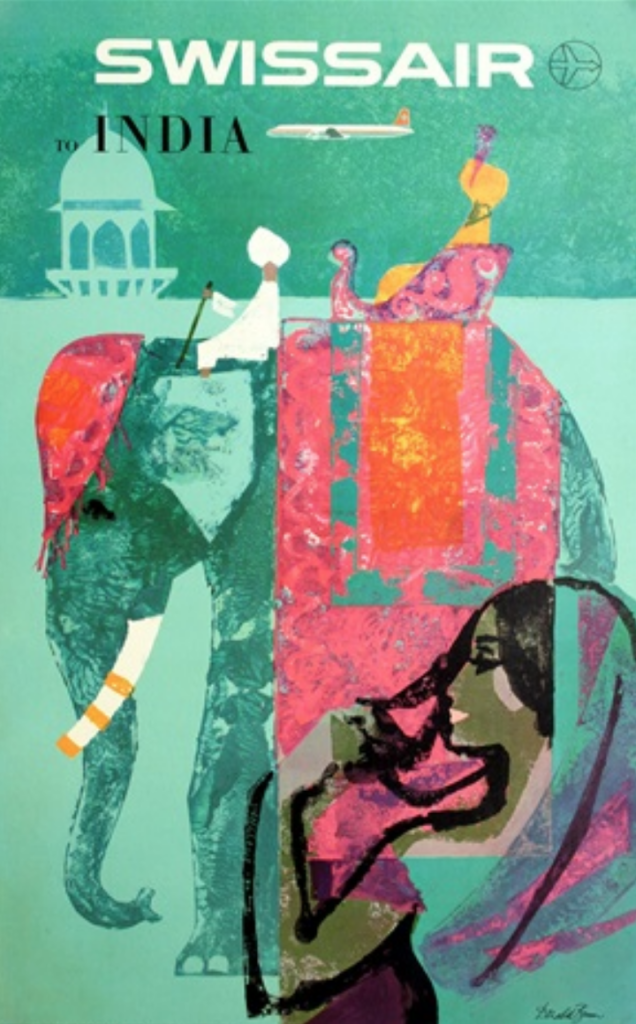
Donald Brun, SwissAir to India (1958). Courtesy of Kapoor Galleries.
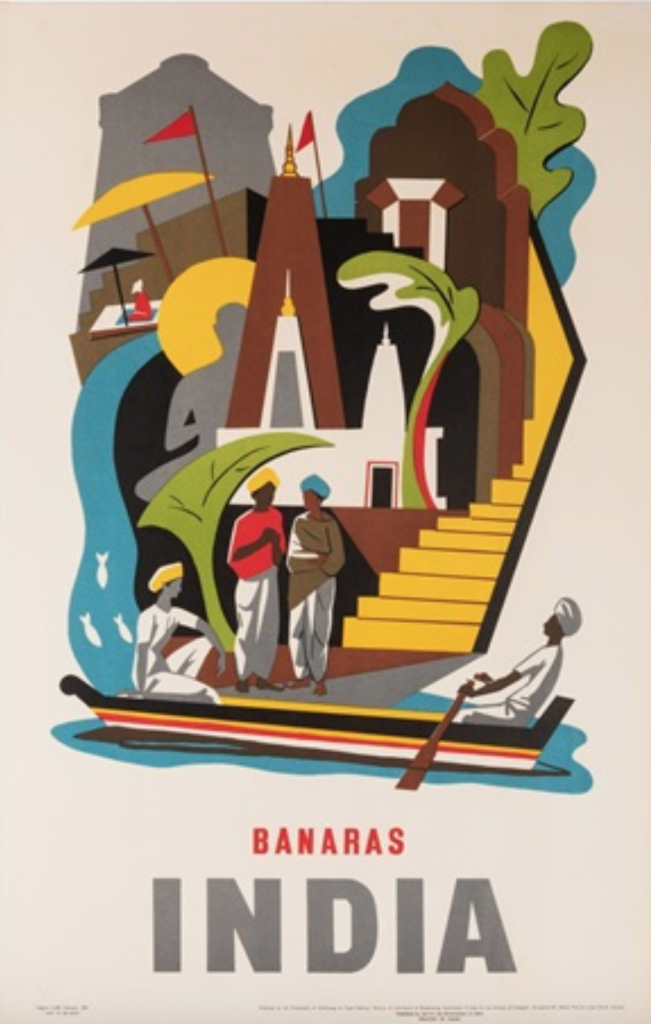
Banaras, India (1957). Courtesy of Kapoor Galleries.
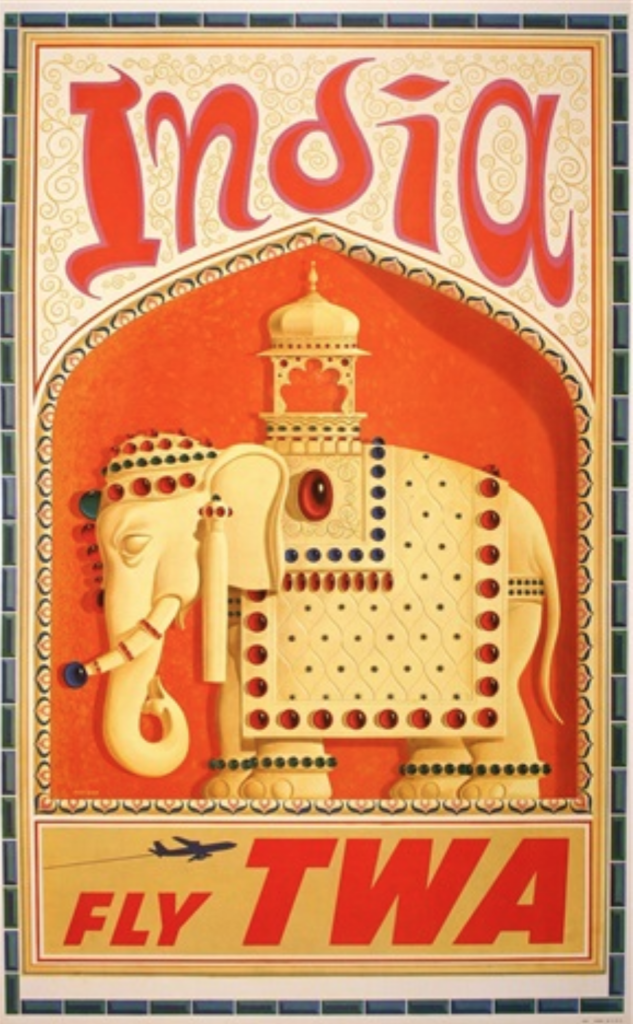
David Klein, Fly TWA India (circa 1960). Courtesy of Kapoor Galleries.
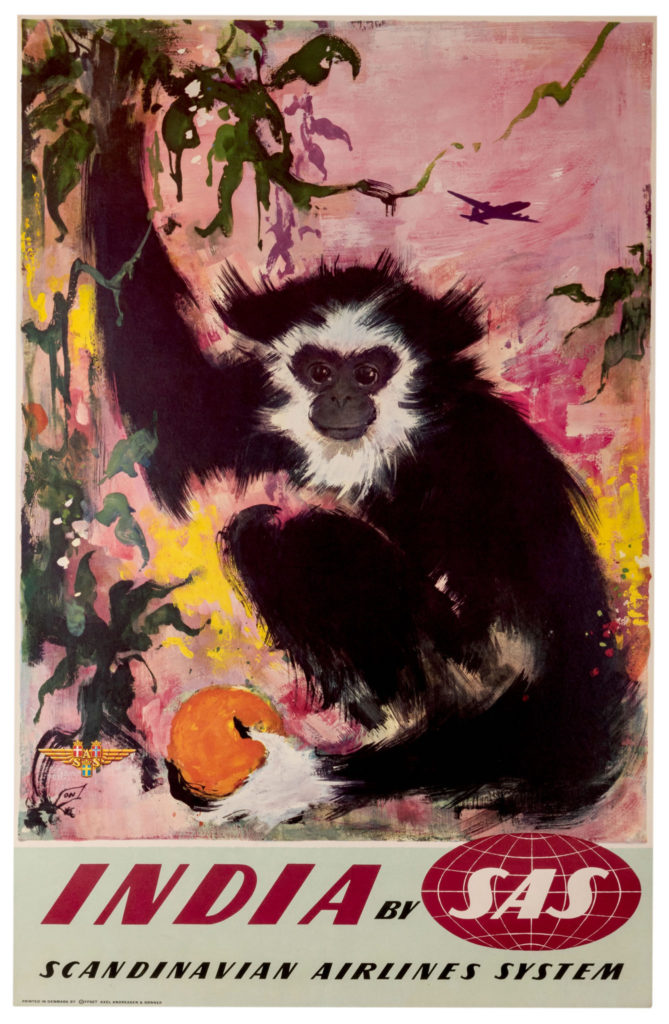
Otto Nielsen, India by Scandinavian Airlines Systems (circa 1995). Courtesy of Kapoor Galleries.
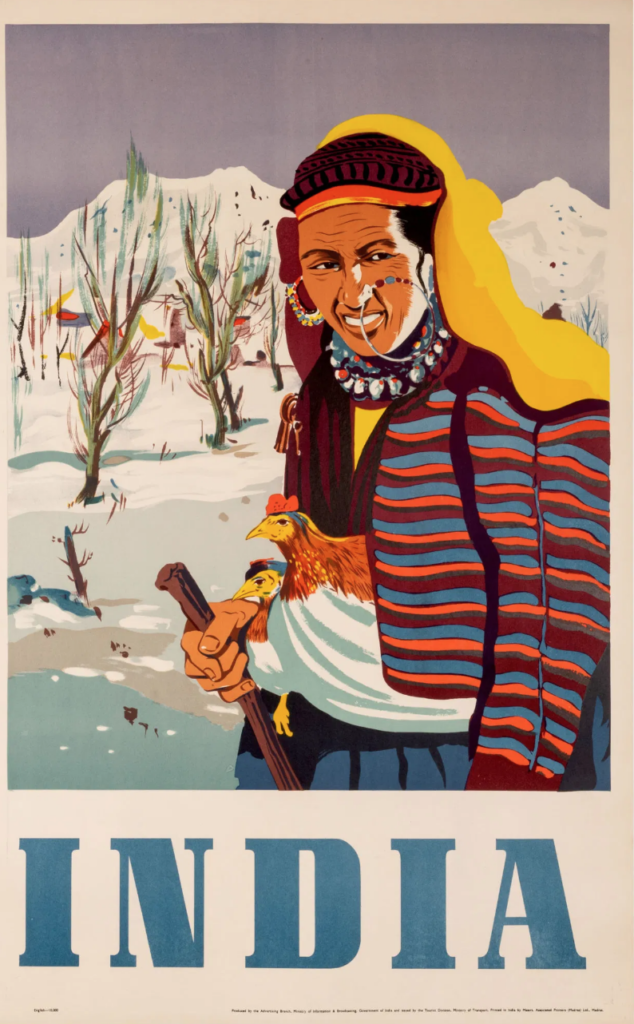
Produced by the Advertising Branch of Information & Broadcasting, Government of India Printed by Madras Messrs. Associated Printers Ltd (circa 1950s).